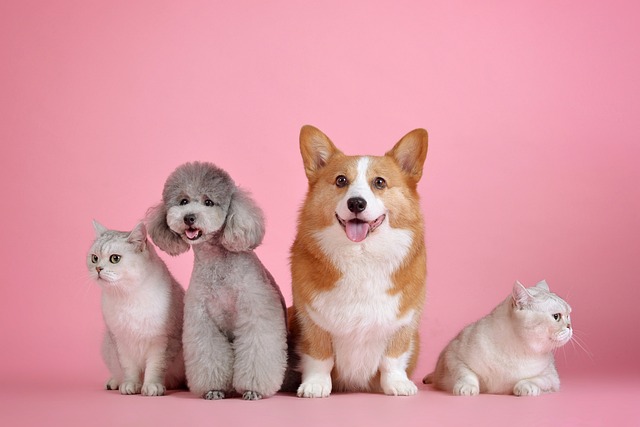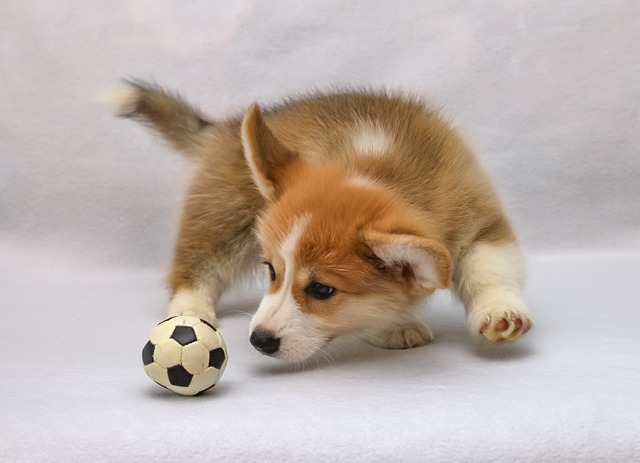The days with dogs at home are always filled with warmth and joy. Their lively figures and affectionate gestures bring endless warmth to our lives. However, the problem of cleaning up dog hair has become a sweet worry for many owners. The hair that floats around and attaches freely to every corner seems to be constantly reminding the owners of its "presence". Thus, a controversial yet curious question quietly emerges: Can we use a vacuum cleaner to clean a dog's hair?
A dog's hair is like a unique "business card" on its body, and each strand has a special meaning. In terms of the hair structure, a dog's hair is divided into the outer guard hair and the inner down hair. The guard hair is relatively thick and hard, playing a role in protecting the body; the down hair is soft and fine, mainly used for keeping warm. Different dog breeds have significant differences in hair characteristics. Short-haired dogs, such as Chihuahuas and Pugs, have short and dense hair. Although it is not easy to get tangled, due to the shortness of the hair, when it falls out, it is extremely easy to attach to the surface of clothes and furniture, making the cleaning quite difficult. Long-haired dogs, such as Golden Retrievers and Samoyeds, have long and thick hair. During the molting season, a large amount of hair falls out. Not only is it easy for the hair to entangle with each other to form hair balls, but it also covers a large area of the living environment, overwhelming people. Moreover, a dog's skin secretes oil, which makes the hair somewhat sticky and adhere more firmly to various items, greatly increasing the difficulty of cleaning.
A vacuum cleaner, as a common cleaning tool in modern households, works based on the principle that the motor runs at high speed to generate a strong suction force, and various brush heads are used to suck in dust, debris, and hair into the dustbin. Theoretically speaking, the powerful suction force of a vacuum cleaner seems to be able to deal with the fallen hair of dogs. However, in actual operation, whether we can directly use a vacuum cleaner to clean a dog's hair still needs to be carefully considered.
An ordinary household vacuum cleaner is mainly designed for cleaning the surface of floors, furniture, etc. If it is rashly used on a dog, it may cause discomfort or even harm to the dog. On the one hand, the suction adjustment range of an ordinary vacuum cleaner is limited. A relatively large suction force may pull the dog's hair, making the dog feel pain and may even damage the hair follicles, affecting the healthy growth of the hair. On the other hand, the noise generated when the vacuum cleaner is working may be an unbearable stimulus for dogs with sharp hearing. A dog's hearing range is much wider than that of humans, and the sharp buzzing sound of the vacuum cleaner may make them feel scared and uneasy, resulting in resistant behavior. Not only will it be impossible to clean the hair smoothly, but it may also cause the dog to lose trust in the owner.

However, with the continuous growth of pet care needs, some vacuum cleaners specifically designed for pets have emerged on the market. These vacuum cleaners fully consider the characteristics of dogs in their design. Firstly, they have a more refined suction adjustment function, which can flexibly adjust the suction force according to the length and texture of the dog's hair and the dog's tolerance level, avoiding damage to the dog's hair and skin. Secondly, in terms of noise reduction, pet-specific vacuum cleaners have been specially treated. By optimizing the motor structure and using sound insulation materials, etc., the working noise is effectively reduced, allowing the dog to have its hair cleaned in a relatively quiet and comfortable environment. In addition, pet-specific vacuum cleaners are usually equipped with a variety of special brush heads, such as the brush head with soft bristles, which can not only gently comb the dog's hair and untangle the knotted hair but also collect the fallen hair without harming the dog's skin.
When using a vacuum cleaner to clean a dog's hair, no matter what type of vacuum cleaner is used, it is necessary to follow the correct operation method. First of all, let the dog get used to the presence of the vacuum cleaner in advance. You can place the vacuum cleaner next to the dog without turning it on, allowing the dog to get familiar with its appearance and smell. Then, gradually turn on the vacuum cleaner and adjust the suction force to the minimum, allowing the dog to get used to the sound of the vacuum cleaner. During this process, the owner should give the dog enough comfort and encouragement, such as gentle strokes and soft praises, so that the dog can establish a positive association with the vacuum cleaner. When the dog gets used to it, use a suitable brush head, start from the dog's back, and move slowly along the direction of hair growth, with gentle movements. During the cleaning process, always pay attention to the dog's reaction. If the dog shows signs of unease or resistance, stop the operation immediately.
It should be noted that even a pet-specific vacuum cleaner is not suitable for all dogs. Some dogs with particularly sensitive skin may still not be able to tolerate the contact with a vacuum cleaner. For such dogs, the owner may need to adopt a more gentle method, such as using a special pet comb for grooming. Moreover, using a vacuum cleaner to clean hair can only remove the hair that has already fallen off the dog. It cannot play a role in combing and caring for the growing hair. Therefore, regularly combing the dog's hair is still an essential part of pet care.
From an emotional perspective, cleaning a dog's hair is not just a household chore but also a moment of intimate interaction between the owner and the dog. When we gently clean the dog's hair with the right tools, the dog can feel our care and love. And for the owner, seeing the dog's hair neat and healthy under their careful care, they will also feel a great sense of accomplishment.
Although theoretically, it is possible to use a vacuum cleaner to clean a dog's hair, in actual operation, it is necessary to select a suitable vacuum cleaner according to the specific situation of the dog and follow the correct operation method. Pet-specific vacuum cleaners provide convenience for cleaning a dog's hair to a certain extent. However, no matter what method is used, the comfort and health of the dog should be the primary consideration. By scientifically and reasonably cleaning the dog's hair, we can create a cleaner and more comfortable living environment for the dog. At the same time, we can also deepen the emotional bond with the dog, making our time with the dog more beautiful and warm.






